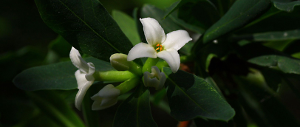Ukraine: Safeguarding Life on Chalk
30.07.14
In the silence of Ukraine’s steppe country, among vast high plains, sweeping valleys and deep gorges, outcrops of white chalk bedrock appear, eroded into strange shapes by wind and rain, forming a pristine and unforgettable landscape.

The plant communities of chalk outcrops in this hilly terrain are unique and extremely diverse - some true steppe plants like grasses and sedges, with others, like perennial herbs, small, drought-tolerant shrubs and patches of forest.
The species composition of these communities is unique and very different from the surrounding areas. They are isolated communities, far away from their main areas of distribution in Western Asia, the Caucasus and the Altai mountains.
Chagra’2010 was a project designed by Mikhail Banik and his team in the north-east of Ukraine, to enhance the conservation profile of chalk steppe ecosystems, rich in endemic plant species. It was also designed to support the newly created Dvourechansky National Park - the first nationally recognized protected area for saving chalk grassland ecosystems in Ukraine. The area is considered to be a centre of endemism due to its high share of endemic plant species, and there are also rare bird species, like the globally threatened Lesser Kestrel that have been identified at these sites.
However, until 2000, when a previous project, Chagra’2000 was launched, there was no current information on the status, distribution and abundance of endemic plant species in the region. Very little was known about the extent of human impacts on plant and bird species populations. Chagra’2000 was a broad-scale expedition designed to estimate the status of rare plant and bird species of the region’s chalk steppe.

Daphne sofia, a typical chalk plant
The work of Mikhail and his team with the National Park involves raising awareness of local people to conservation issues, supporting local schools and monitoring species on the ground. The team’s awareness raising campaign contributed to the positive attitude of local people to the creation of the park and established friendly contacts and cooperation between park staff and district authorities. The team provided local schools with teaching aids designed to stress the value of chalk grasslands and illustrated guides for the identification of chalk plants. They also launched a phenological observation programme which is now maintained by park staff. Monitoring schemes for both plant communities and bird species have been taking place in the park since 2010.
The team has now created the first ever Internet site devoted to chalk steppe: www.chalksteppe.org with a photo guide to more than 200 plant species.